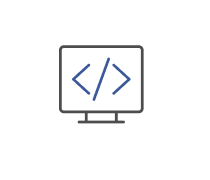__________ can warn administrators of excessive storage utilization...
Except in special cases, it is usually not necessary to explicitly...
Using quota __________ simplifies the quota management process.
Printing in Microsoft Windows typically involves four components...
After the printer processes a print job, it stores the job in a print...
In an enterprise environment, it is important to monitor and regulate...
Windows Fax and Scan is packaged as part of a single feature named...
The printer is associated with a printer driver that takes the...
DFS replication between two members is always __________ by default.
A member server can support up to one __________ of replicated files,...
To enable replication for a DFS folder with multiple targets, you must...
What enables administrators to monitor and regulate the storage...
To send email messages, what service does a Windows Server 2008...
In addition to creating storage quotas, FSRM enables administrators to...
What topology enables you to limit replication traffic to specific...
The simplest print architecture consists of one print device connected...
Which service does Windows Server 2008 include that provides basic...
For each member server, the number of replication groups multiplied by...
By default, what type of topology is used by replication groups in...
With network-attached print devices, the primary deployment decision...
Which permissions do administrators typically use to assign storage...
Which console can be used to create multiple shares and exercise...
There is no compelling reason to use the FAT file system in Windows...
To whom should you always assign security permissions?
The simplest print architecture consists of one print device that is...
All versions of the Windows Server 2008 operating system can function...
Each server can be a member of up to __________ replication groups.
What converts the print jobs generated by applications into an...
Which Print Services role enables UNIX clients running the LPR (line...
A replication group can have up to __________ members.
__________ is the only role service that is required when you add the...
A well-designed sharing strategy provides each user with three...
The most common use of a file screen is to __________.
Which Print Services role installs the Print Management console for...
When implementing DFS on a Windows Server 2008 computer, you do not...
Which of the following statements is not true regarding FSRM quotas?
A collection of settings in a quota template defines all of the...
You must also install the __________ when installing the Internet...
What hardware actually produces hard-copy documents on paper or other...
Adding namespace servers to an existing namespace replicates only the...
Which of the following is the default Windows Server 2008...
You must add the __________ role to use a Windows Server 2008 computer...
A computer communicates with a print device through which software...
















